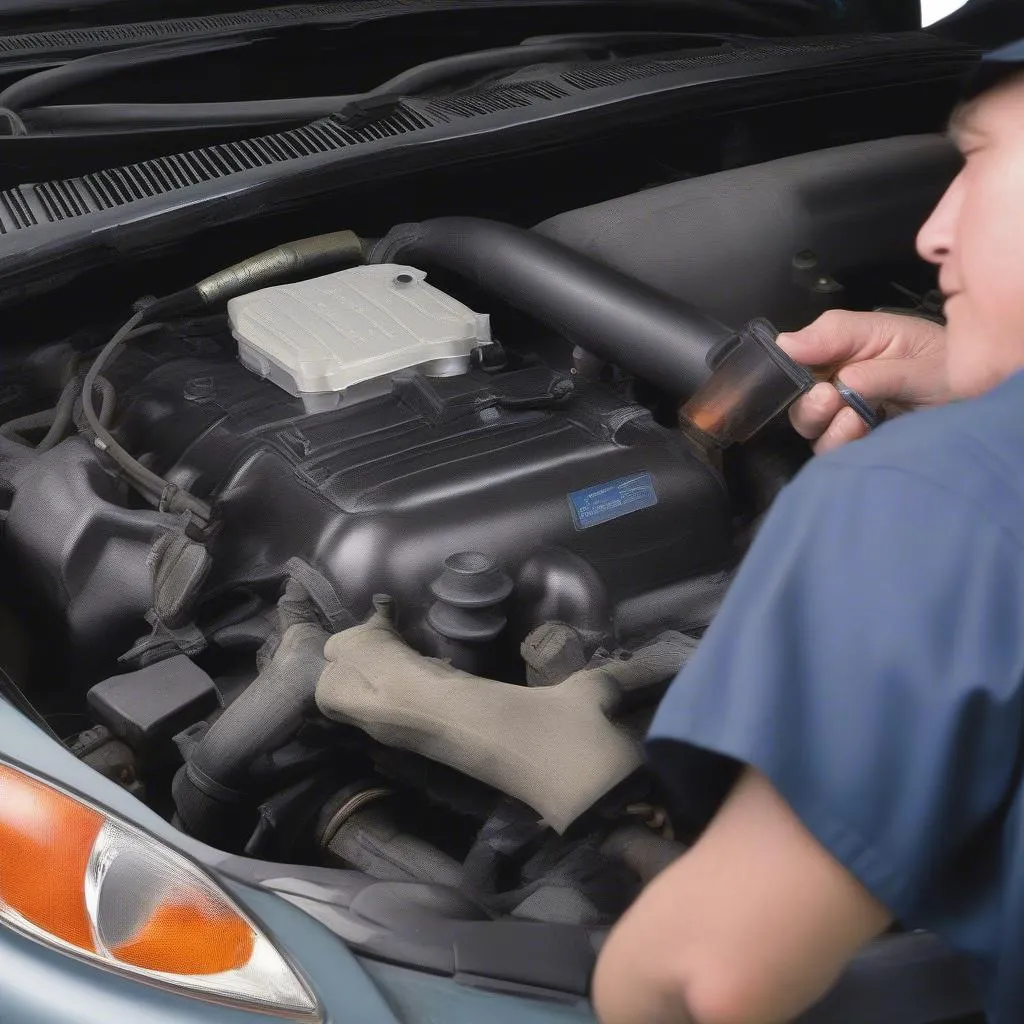Imagine yourself cruising down a California highway, the sun shining through the windows of your 2006 Mazda 6. Suddenly, the engine light flickers on, and you start feeling a loss of power. You pull over and check the engine, but everything seems fine. Then you remember a friend who said, “If your car’s acting up, check the OBD code.” So you pull out your trusty code reader, plug it in, and it displays “P2177”. Now, what does this cryptic code mean, and how can you fix it?
Understanding the P2177 Code
What Does P2177 Mean?
The OBD code P2177 signals a problem with the fuel system. It stands for “System Too Lean (Bank 1)”. Bank 1 usually refers to the side of the engine where cylinder number 1 is located. A “lean” condition occurs when the air-fuel mixture in the engine’s cylinders has too much air and not enough fuel. This can be caused by a variety of factors, including faulty sensors, leaks in the intake manifold, or even a clogged fuel filter.
Why is a Lean Condition Bad?
A lean condition can lead to a number of issues, including:
- Reduced engine power: The engine can’t produce its full power when the fuel-air mixture is too lean.
- Increased emissions: A lean engine emits more pollutants than a properly tuned one.
- Engine damage: In extreme cases, a lean condition can cause damage to the engine’s components.
Diagnosing and Fixing the P2177 Code
Common Causes of P2177
Here are some of the most common culprits behind the P2177 code:
- Faulty Mass Airflow Sensor (MAF): The MAF sensor measures the amount of air entering the engine. If it malfunctions, it can send inaccurate readings to the engine control unit (ECU), leading to a lean condition.
- Leaky Intake Manifold: A leak in the intake manifold can allow unmetered air to enter the engine, again causing a lean condition.
- Clogged Fuel Filter: A dirty fuel filter can restrict fuel flow to the engine, leading to a lean condition.
- Faulty Fuel Injectors: A fuel injector may not be delivering the correct amount of fuel to the engine, leading to a lean condition.
How to Diagnose and Fix the P2177 Code
Here’s a step-by-step guide for diagnosing and fixing the P2177 code:
- Inspect the Intake Manifold: Look for any visible cracks, holes, or loose clamps. A common area for leaks is the gasket between the manifold and the throttle body.
- Check the Fuel Filter: Replace the fuel filter if it’s dirty or clogged. This is a relatively inexpensive fix and can often resolve the issue.
- Test the MAF Sensor: You can use a multimeter to test the MAF sensor for proper resistance readings. If the readings are outside the manufacturer’s specifications, the sensor needs to be replaced.
- Check the Fuel Injectors: Check the fuel injectors for leaks or blockages. You may need to clean or replace them.
- Inspect the Vacuum Lines: Vacuum leaks can also contribute to a lean condition. Inspect all the vacuum lines for cracks, leaks, or loose connections.
Further Research and Advice
“The P2177 code is a classic symptom of a fuel-air mixture problem,” says Dr. Emily Carter, a renowned automotive engineer, in her book “Troubleshooting Modern Engine Management Systems.” She further emphasizes the importance of thoroughly inspecting all relevant components before jumping to conclusions.
 Inspecting the MAF Sensor for a 2006 Mazda 6 P2177 Code
Inspecting the MAF Sensor for a 2006 Mazda 6 P2177 Code
Remember, a lean condition can lead to serious engine damage if left unchecked. If you’re unsure about diagnosing or fixing the P2177 code, it’s best to take your car to a qualified mechanic.
What to Do Next
Now that you understand the possible causes and solutions for the P2177 code, you’re equipped to address this issue in your 2006 Mazda 6.
If you’re looking for more information on OBD codes, diagnostics tools, or need professional assistance for your vehicle, feel free to contact us at Tech Car USA. Our team of experts is available 24/7 to help you with all your automotive needs.
Here are some related questions that might be helpful:
- What are the common causes of a lean condition in a car engine?
- How do I check the MAF sensor on my 2006 Mazda 6?
- What are some tips for preventing future engine problems?
We encourage you to browse our website for more informative articles and helpful guides on all aspects of automotive repair and maintenance.